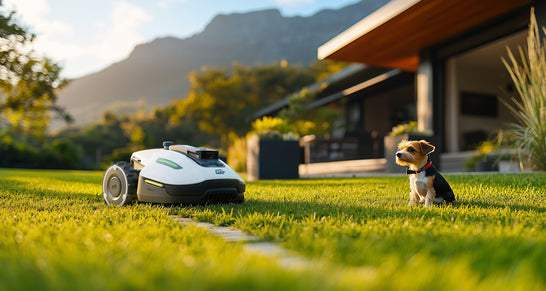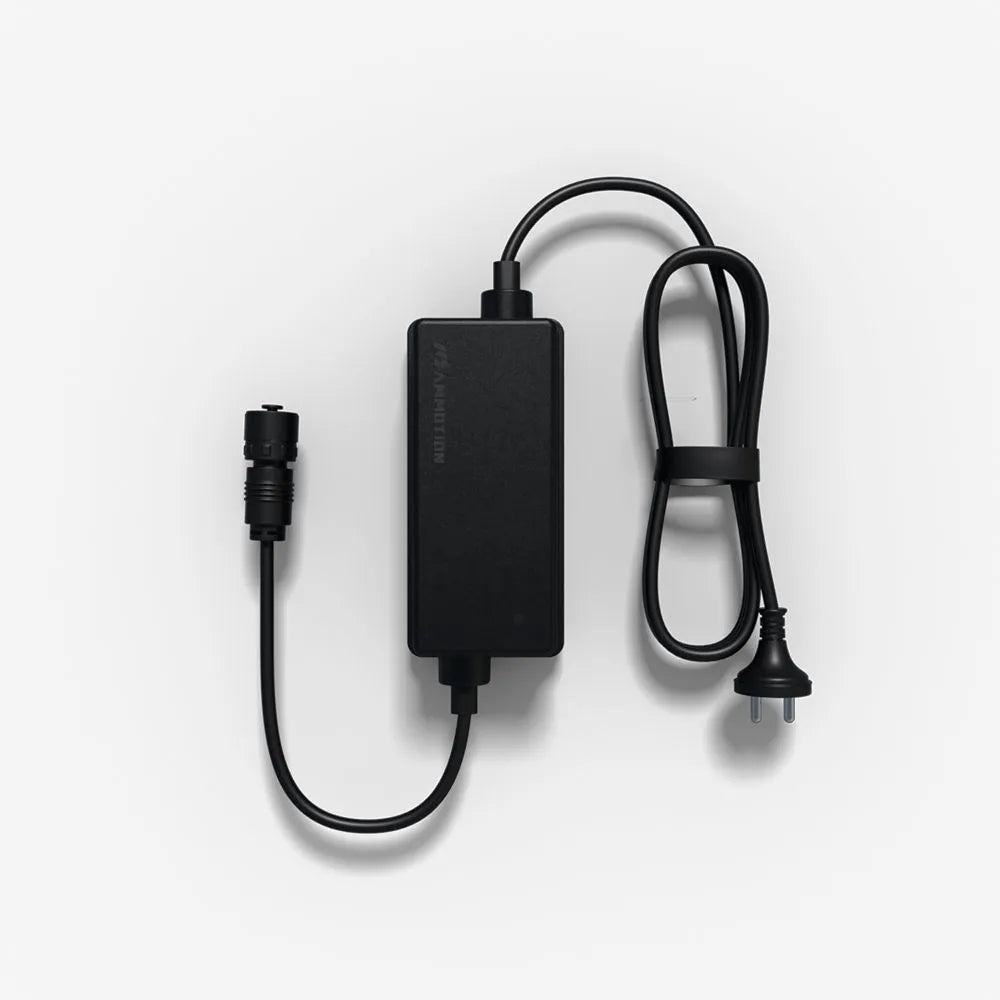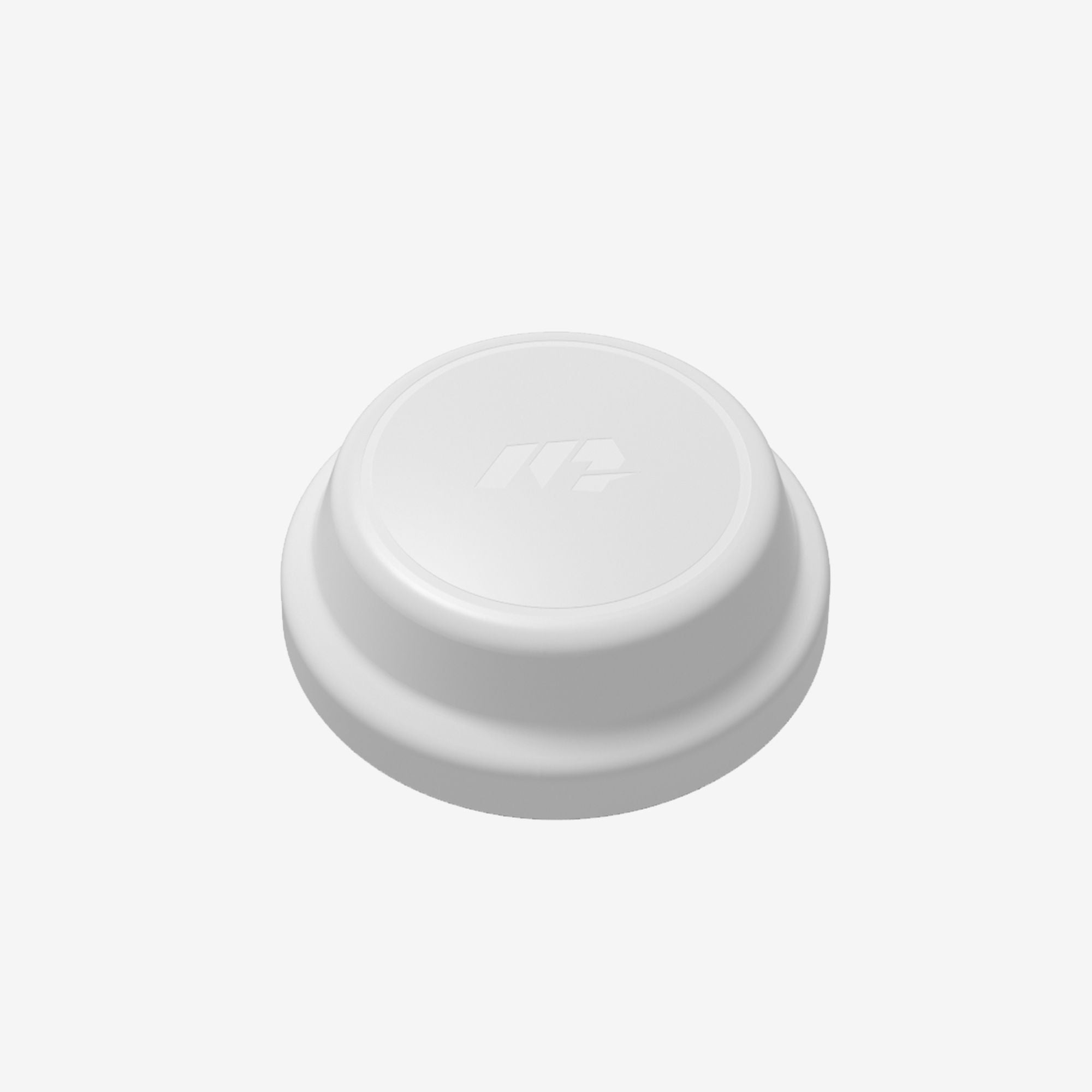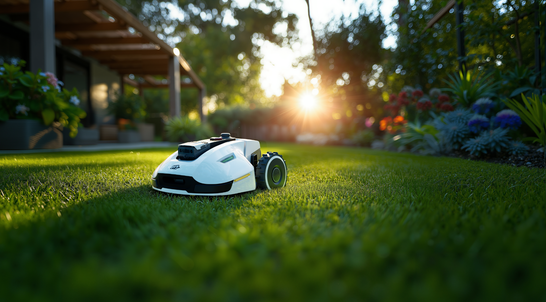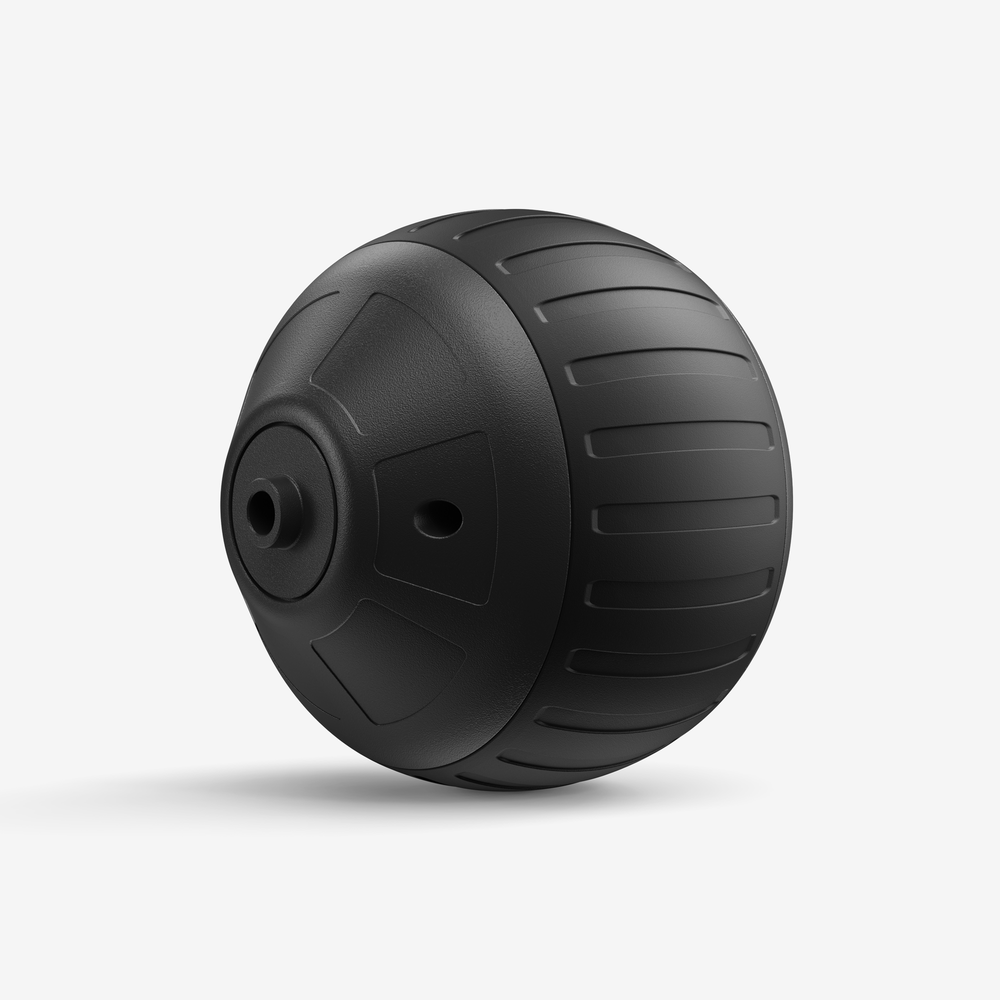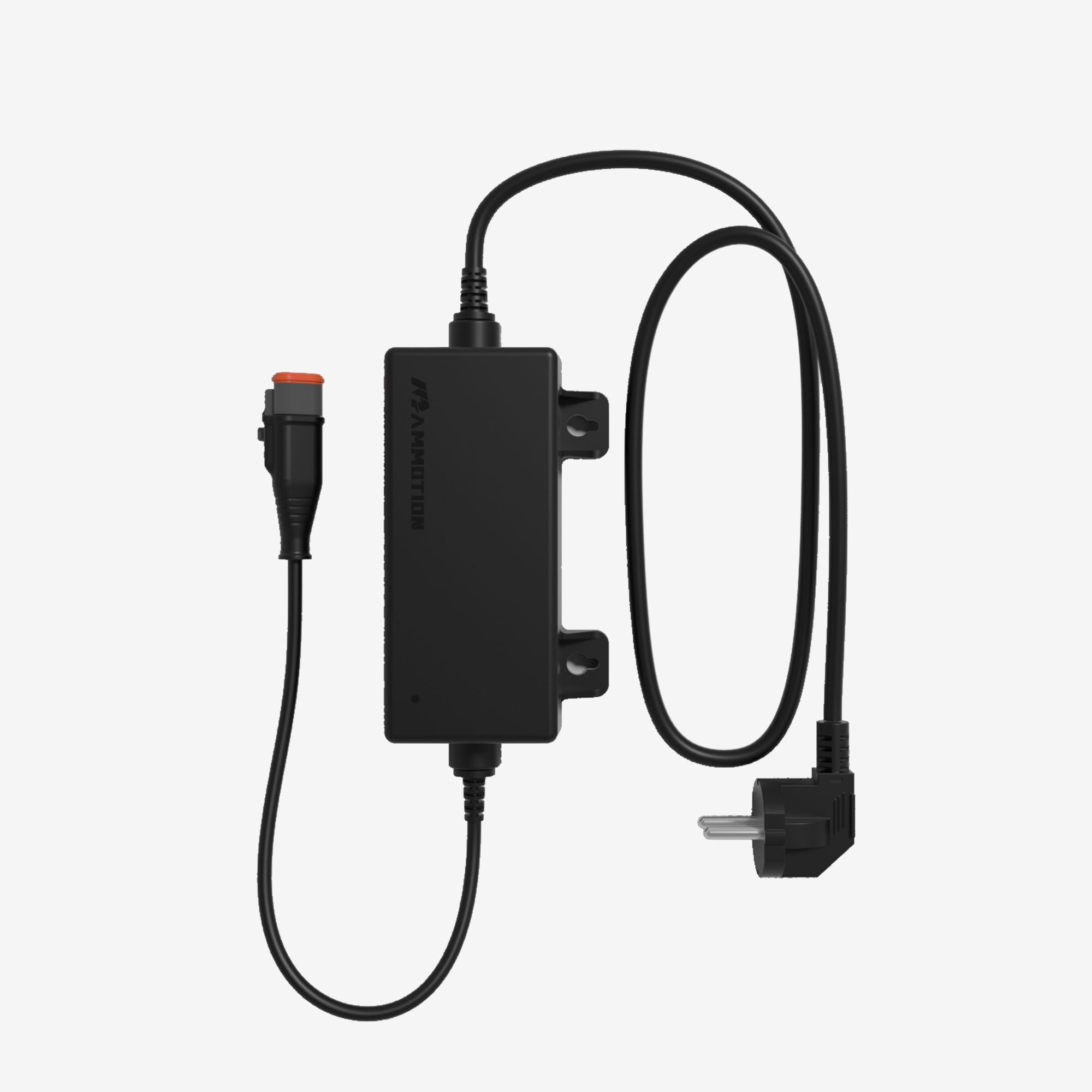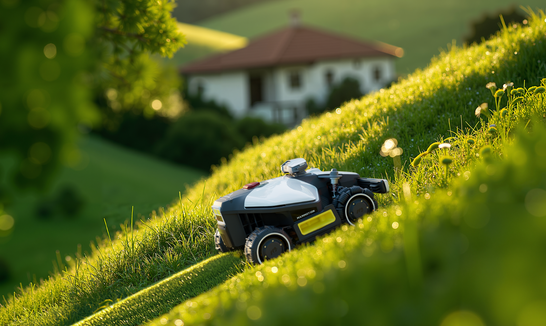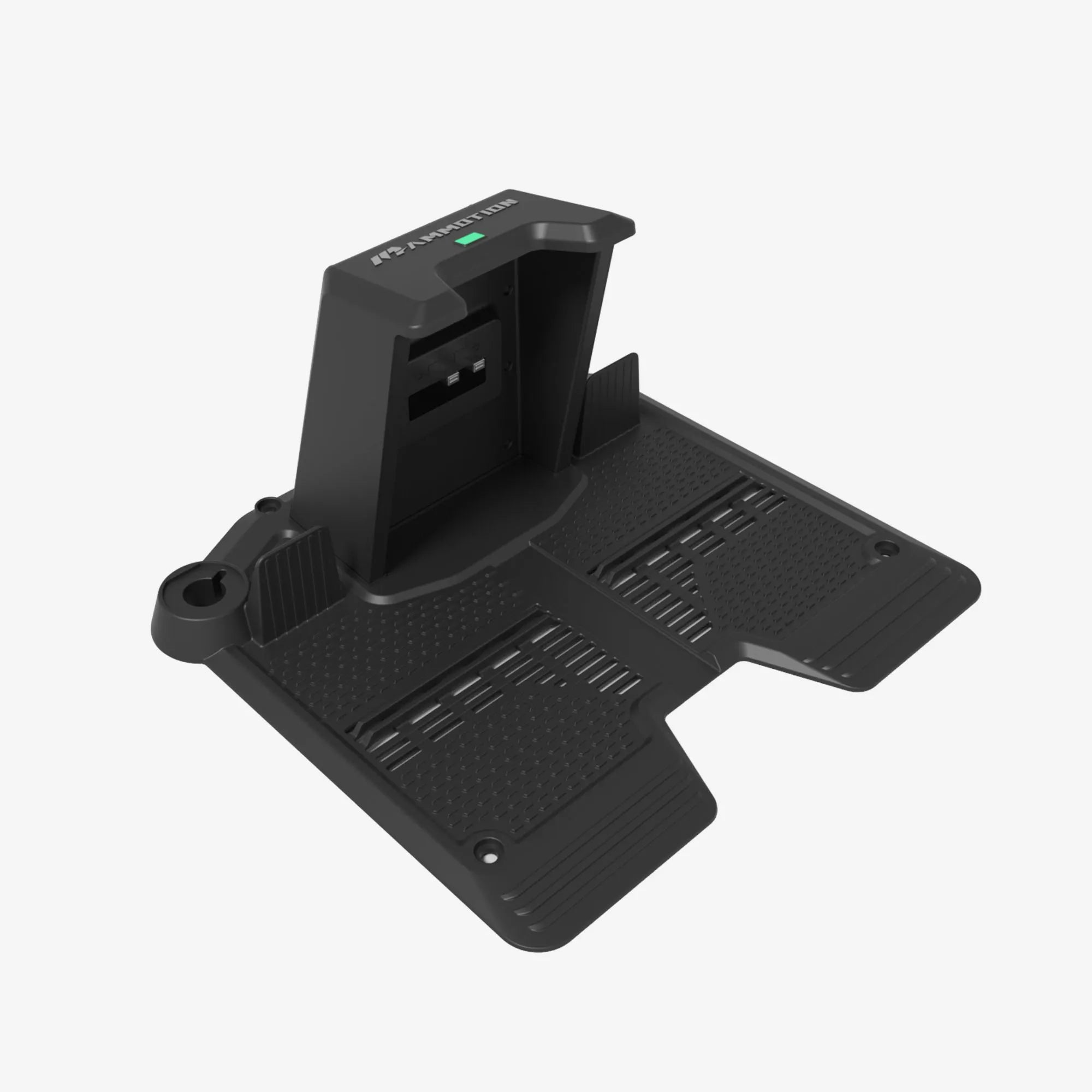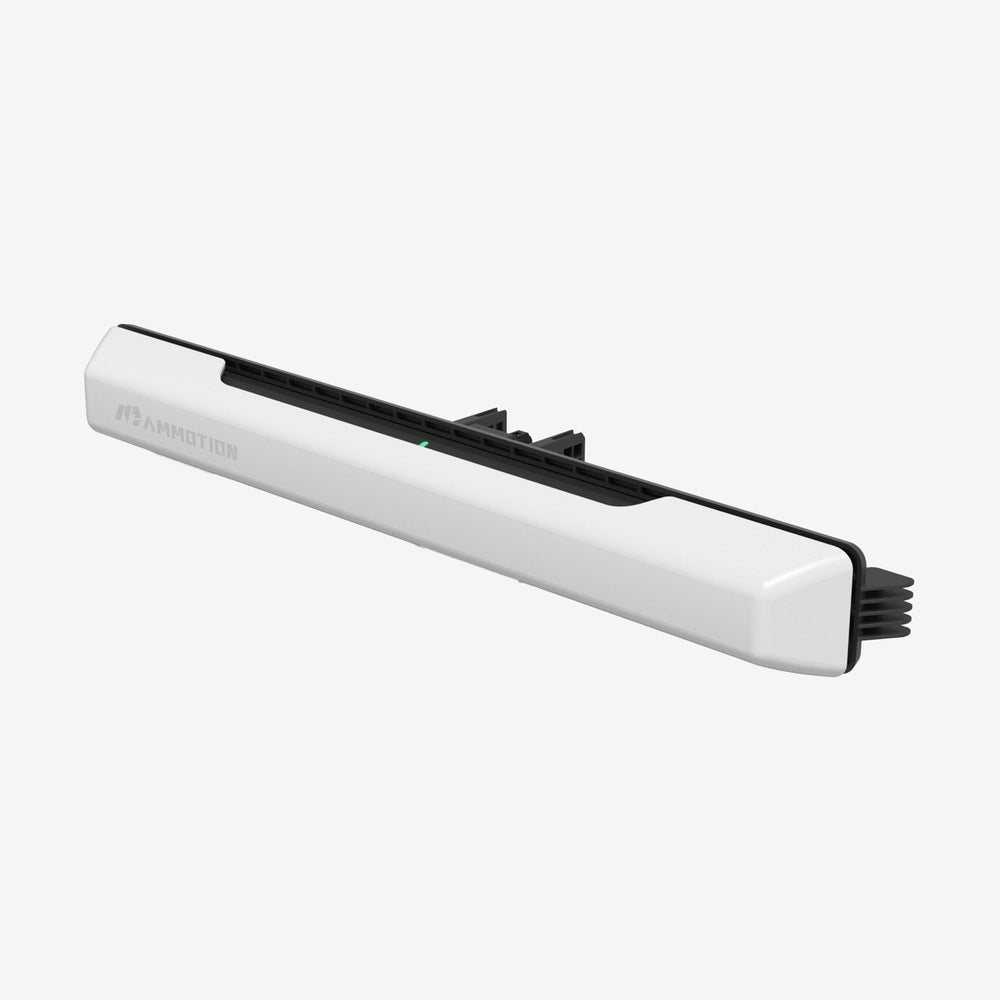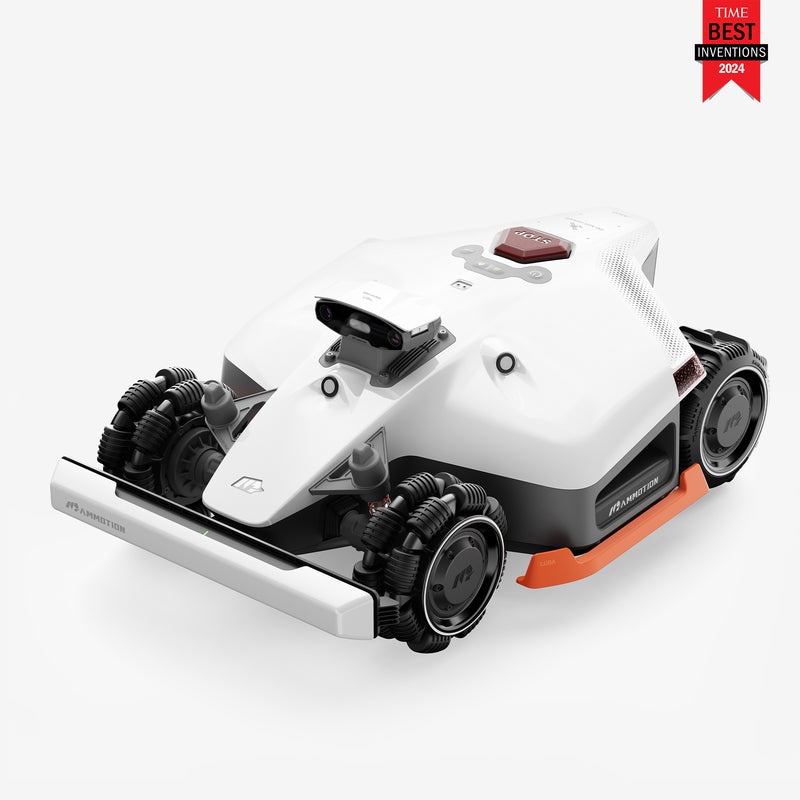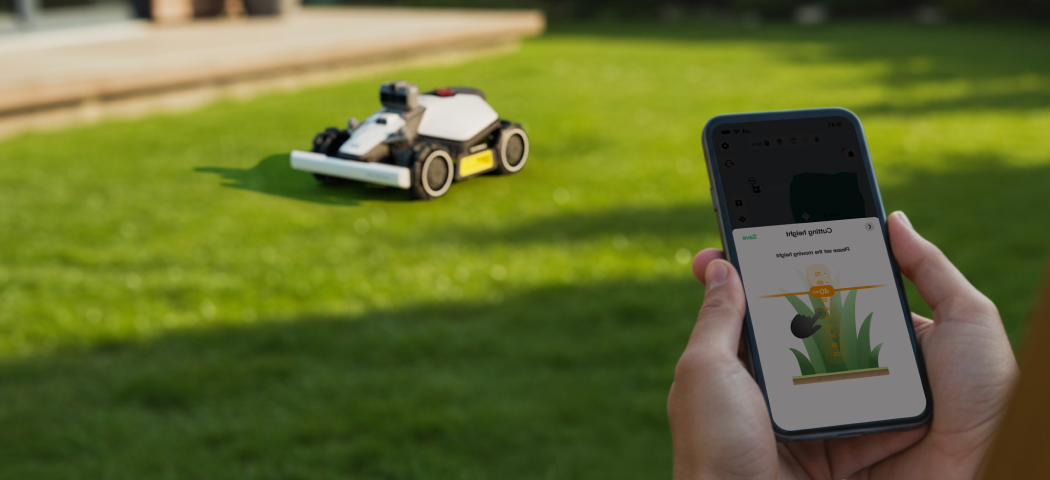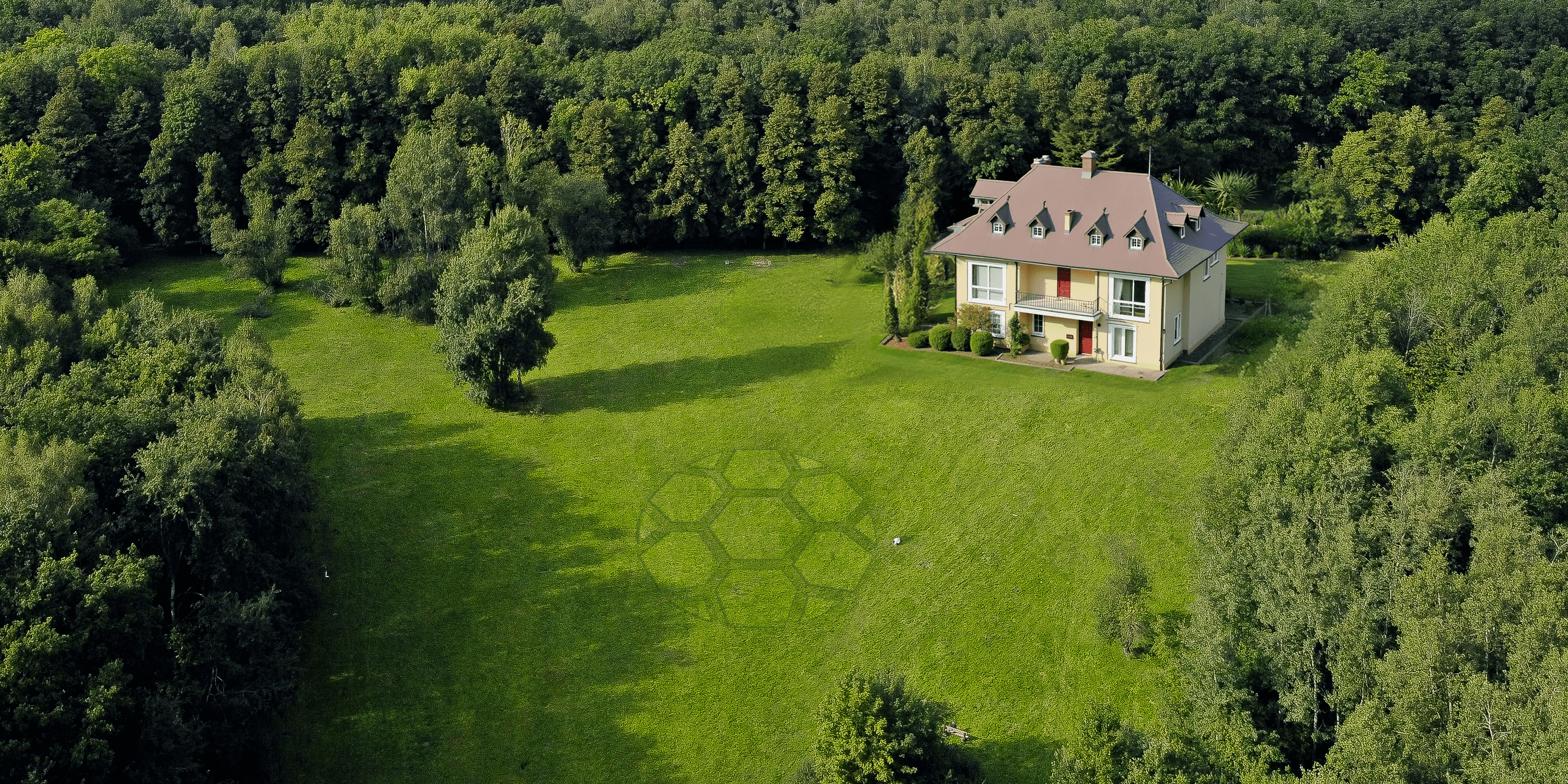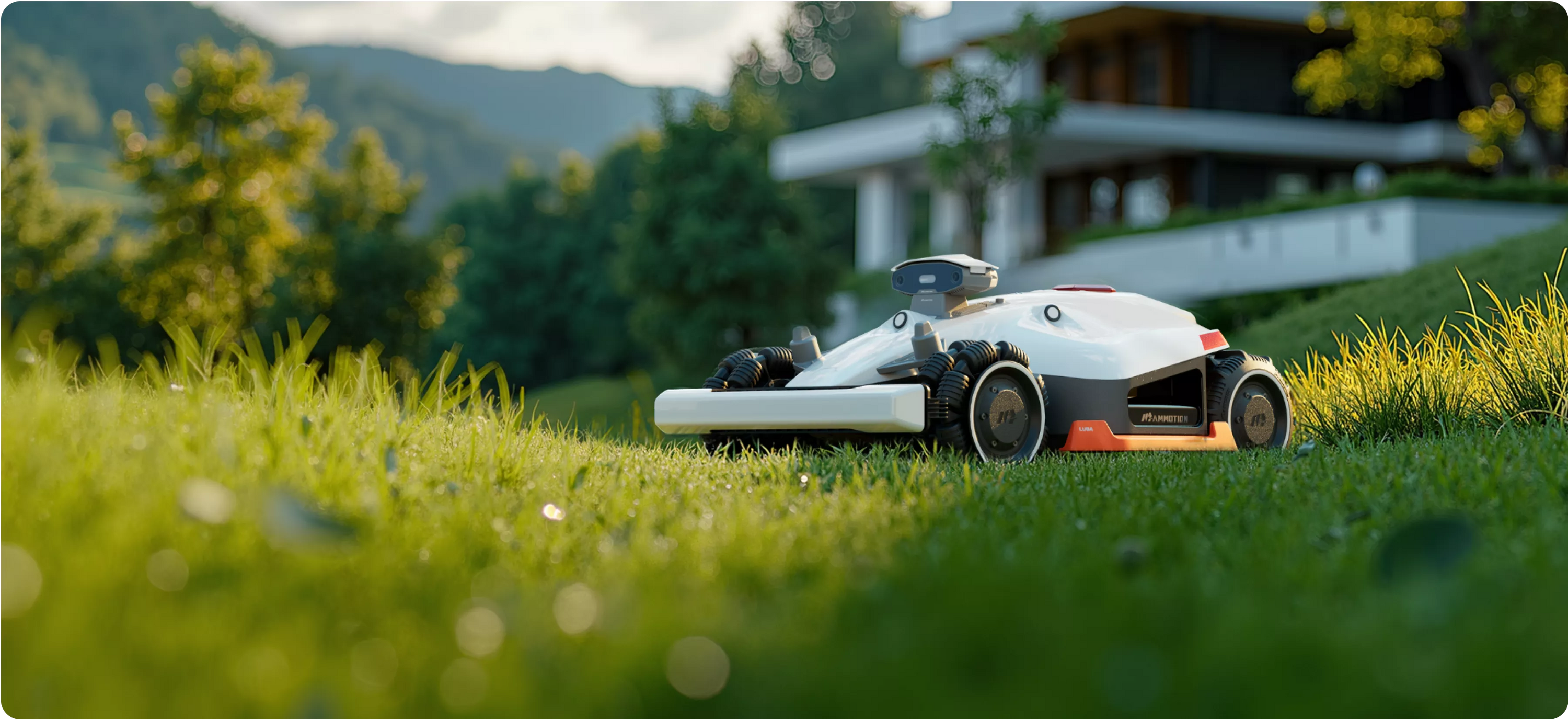In the UK, where neat green lawns are a symbol of pride, mowing the lawn patterns has become both a skill and a form of garden art. Those perfect stripes and checkerboard effects seen on sports fields and elegant front lawns aren’t accidental—they’re created through light reflection, precise mowing, and the right equipment.
This article will guide you through everything from the basics of how patterns form to the different lawn design styles you can try, including classic stripes, criss-cross, and creative patterns. You’ll also discover how Mammotion’s advanced robot lawn mowers make achieving professional, repeatable lawn patterns effortless.
What Are Lawn Mowing Patterns and Why Use Them?
If you’ve ever admired the immaculate stripes on a Premier League pitch or the checkerboard perfection of an English manor’s front garden, you’ve already seen mowing the lawn patterns in action.
These effects are created by bending grass blades in opposite directions as you mow — the grass pushed away reflects light and appears lighter, while the grass bent toward you looks darker. The result? Those striking stripes, diamonds, or criss-cross patterns that turn a simple garden into a masterpiece.
How Lawn Patterns Work
According to the Royal Horticultural Society (RHS), grass stripes are formed by light reflecting differently off the direction the blades lie. A roller mower is typically used to bend the grass evenly after each cut.
UK lawn specialists such as Joe’s Lawn Care and LawnCrew recommend mowing in straight, consistent passes and alternating direction each week to keep your pattern sharp and your lawn healthy. Cool-season grasses like ryegrass and fescue, which are common across UK lawns, respond best to this technique due to their flexibility and bright reflective blades.
Why Use Lawn Mowing Patterns
Beyond adding visual appeal, patterned mowing provides tangible benefits for both the appearance and health of your turf:
- Enhances Curb Appeal: Creates a clean, professional look that immediately upgrades your garden’s appearance. Stripes make small front lawns appear longer, while diamond or diagonal patterns add a touch of sophistication. (Homes & Gardens UK, 2024)
- Promotes Healthier Growth:Alternating mowing directions prevents the grass from permanently leaning in one way and encourages upright, even growth. (GreenThumb UK Lawn Guide)
- Prevents Soil Compaction:Varying mowing direction distributes pressure evenly, keeping the root zone aerated and preventing bald patches. (Joe’s Lawn Care Blog)
- Improves Light & Nutrient Absorption:Each blade receives more sunlight exposure and fertiliser coverage, producing richer, more consistent colour across the lawn.
- Reduces Drainage Problems:Adjusting pattern direction avoids ruts and helps rainwater flow naturally—crucial in the UK’s rainy seasons.
- Adds Personal Expression:As LawnCrew notes, a mowing pattern is your signature: it reflects care, creativity, and pride in your garden.
Pattern mowing isn’t reserved for professionals — with a reliable roller mower, patience, and a steady hand, any UK homeowner can master mowing the lawn patterns.
What Kinds of Lawn Design Can You Choose?
Once you understand how mowing the lawn patterns work, the next step is choosing the design that best fits your garden’s layout and personality. From clean, classic stripes to artistic, curved shapes, each pattern offers a different visual effect and practical benefit.
According to Homes & Gardens UK, choosing the right mowing pattern can “shape how people experience your garden” . Below, we’ve divided lawn designs into two main classifications — general and functional — to help you find your ideal style.
1. General Classification – The 5 Most Common Lawn Patterns
| Category | Description | Visual Effects / Features |
|---|---|---|
| Stripes (Classic Linear) | Parallel lines created by mowing in one direction, then the opposite. | Gives a professional football-pitch look; simple yet timeless. |
| Checkerboard / Crosshatch | Mow once vertically, then again horizontally or diagonally. | Creates a luxury “stadium” feel; symmetrical and eye-catching. |
| Diagonal Lines | Cut at 45° angles relative to lawn edges. | Adds depth and width illusion; ideal for rectangular lawns. |
| Spiral / Circular | Mow from the center outward in a spiral shape. | Dynamic and unique; suits round gardens and focal areas. |
| Custom / Artistic Patterns | Freeform mowing — logos, waves, hearts, or maze shapes. | Playful and creative; perfect for personal or event lawns. |
2. Functional Classification – Based on Purpose and Technique
| Category | Description | Visual Effects / Features |
|---|---|---|
| Stripes (Classic Linear) | Parallel lines created by mowing in one direction, then the opposite. | Gives a professional football-pitch look; simple yet timeless. |
| Checkerboard / Crosshatch | Mow once vertically, then again horizontally or diagonally. | Creates a luxury “stadium” feel; symmetrical and eye-catching. |
| Diagonal Lines | Cut at 45° angles relative to lawn edges. | Adds depth and width illusion; ideal for rectangular lawns. |
| Spiral / Circular | Mow from the center outward in a spiral shape. | Dynamic and unique; suits round gardens and focal areas. |
| Custom / Artistic Patterns | Freeform mowing — logos, waves, hearts, or maze shapes. | Playful and creative; perfect for personal or event lawns. |
How to Achieve a Professional Lawn Design
Once you’ve chosen your ideal pattern, it’s time to bring it to life. Achieving a professional-looking lawn isn’t just about neat lines — it’s about understanding direction, timing, and how your mower interacts with the grass.
How to Get Classic Lawn Patterns
Tools You’ll Need
To get that stadium-style look, you’ll need:
- A mower with a rear roller or cylinder mower – essential for bending grass blades evenly.
- String line or garden marker – helps you keep each stripe straight.
- Sharp mower blades – dull edges tear rather than cut, causing uneven reflection.
- Grass height: maintain between 25–35 mm for cool-season UK grasses like ryegrass or fescue.
- Optional: roller attachment for enhancing the striping effect.
Step-by-Step Process
- Mow the perimeter first — this defines the edges and gives you space to turn.
- Pick a focal point — align your first stripe with a straight feature such as a wall, path, or hedge.
- Mow in straight lines — walk slowly and overlap each pass by 3–5 cm for consistent coverage.
- Alternate direction — mow one row forward, then return in the opposite direction.
- Finish with border trimming — tidy the edges using a trimmer or edger for a professional finish.
Pro Tips
- Mow when dry: Wet grass won’t bend properly, leaving patchy patterns.
- Change direction weekly: This prevents soil compaction and ensures grass grows upright.
- Keep consistent speed and roller pressure: Even pressure ensures equal light reflection.
- Sharpen mower blades regularly: Clean cuts encourage greener growth and crisper stripes.
- Use fertiliser sparingly but regularly: Healthy, dense grass holds its shape better for patterning.
How to Get Creative Lawn Patterns
Creative lawn mowing patterns let you transform ordinary grass into something that feels uniquely yours — a reflection of your personality and creativity. Whether it’s a checkerboard lawn, a spiral design, or even a custom logo pattern, your garden can become a living canvas.
Tools You’ll Need
- To design cool lawn patterns or more advanced lawn stripe designs, the right combination of tools — traditional and modern — makes all the difference:
- Rear-roller or cylinder mower: still the foundation for crisp lines and light reflection.
- GPS-enabled robot mower : perfect for complex, repeatable robot lawn mower patterns. They use RTK GPS + AI Vision to follow pre-set mowing routes with centimetre-level precision.
- Smart app control: allows you to draw your design digitally — from checkerboards to spirals, even text, initials, or logos.
- Marking tools: Garden string or chalk lines for manual guides if you’re using a standard mower.
- Grass height: Maintain 30–40 mm — slightly taller for stronger visual contrast.
- Good lighting conditions: Aim to mow in the morning or late afternoon for clear shadow definition.
Step-by-Step Process
- Plan your layout:Sketch or digitally map your design — checkerboard, diamond, spiral, or text (“WELCOME,” initials, or brand logo). If using a robot mower, set mowing paths through the Mammotion App and adjust angles or word spacing.
- Create a base framework:Start with classic stripes to define the main direction, using manual or robot control.
- Layer additional patterns
-
- For checkerboard pattern lawns: mow again at 90°.
- For criss-cross or diamond: add 45° diagonal passes.
- For letters or logo designs: define zones via app or marking guides; the robot mower will trace them precisely.
4. Enhance and frame:Re-roll or re-mow along edges for deeper contrast and finish with a clean border cut.
Pro Tips
Personalise your lawn: With intelligent navigation, you can mow your initials, favourite words, or even your brand logo directly onto the grass. Perfect for special events, parties, or commercial displays.
- Combine tech and creativity: Let a robot lawn mower pattern maintain the structure while you manually refine the decorative details.
- Vary directions weekly: Keeps grass upright and the design crisp.
- Choose the right grass type: Ryegrass or fescue hold shapes better for detailed logos or lettering.
- Avoid mowing when wet: Damp grass reduces roller effect and blurs patterns.
- Try hybrid patterns: Use the robot for straight passes and add curves manually for an artistic finish.
How to Get the Best Lawn Design with a Robot Lawn Mower
Technology has transformed every part of our lives — and now it’s changing how we care for our lawns. Traditional rollers require precision, patience, and time. But with an advanced robot lawn mower like Mammotion, perfect mowing the lawn patterns no longer depend on human skill — only imagination.
Beyond the classic stripes on grass, you can create a variety of cool and creative lawn patterns with a Mammotion robot lawn mower. Unlike conventional models, Mammotion’s LUBA and YUKA Series use RTK GPS and AI Vision navigation to map every centimetre of your garden.
This means the mower can cut along precise lines or custom routes automatically, reproducing perfect stripes, checkerboards, or criss-cross patterns every time — without a single perimeter wire.
Why Mammotion Is the Best Choice for UK Lawns
- Precision without effort: RTK GPS ensures flawless pattern alignment, even on large or complex lawns.
- Wire-free setup: No installation hassles — perfect for front lawn garden designs or lawns with flowerbeds.
- Customisable creativity: Switch between classic stripes, checkerboards, or personal text designs at any time.
- Consistent maintenance: Scheduled mowing keeps stripes sharp and grass evenly trimmed year-round.
- Eco-friendly & quiet: Electric operation means zero emissions and peaceful mowing — even early mornings.
Mammotion’s innovation turns lawn care into creative design. You can enjoy a beautifully patterned lawn that rivals any professional groundskeeper — but without the hours of manual labour.
The combination of AI precision, custom design freedom, and sustainable technology makes Mammotion the ultimate partner for anyone passionate about perfecting their lawn design.
Conclusion
Mowing the lawn patterns is more than a garden task—it’s a creative expression that turns ordinary grass into living art. From classic stripes to custom logos, every design adds character and charm. With Mammotion’s smart robot lawn mowers, achieving perfect, repeatable patterns is effortless.
Frequently Asked Questions
1. How long does it take to create visible mowing patterns on a new lawn?
For newly established lawns, it usually takes 4–6 weeks after the first few mowings before patterns appear. The grass must develop strong roots and enough blade length to reflect light properly.
2. What’s the best lawn mower for stripes and creative patterns?
A rear-roller or cylinder mower is perfect for classic stripes. For automated precision, the Mammotion LUBA or YUKA robot lawn mower with RTK GPS navigation creates flawless, repeatable mowing the lawn patterns without perimeter wires.
3. Can I create lawn patterns on uneven or sloped lawns?
Yes. On slopes, follow the natural contour to avoid scalping. Mammotion’s AI Vision and RTK GPS systems help maintain straight, balanced lines even on irregular ground.
4. How often should I mow to maintain my lawn pattern?
Mow every 5–7 days during the growing season. Regular mowing keeps the grass at a steady height, maintains contrast, and prevents patterns from fading.
5. Which grass types are best for striping and pattern design?
Perennial ryegrass and fescue are ideal for mowing the lawn patterns because they grow upright and have reflective surfaces, common in most UK lawns.
6. How to get stripes in lawn naturally?
Use a rear-roller mower to bend grass in opposite directions. Keep grass 25–35 mm tall and mow when dry. A Mammotion robot mower can automatically follow straight lines to create sharp, even stripes with minimal effort.
7. How to get criss cross pattern in lawn?
Mow your first set of stripes in one direction, then mow again at a 45° angle. The overlapping contrast forms a criss-cross effect. Mammotion YUKA can automatically trace these angles for perfect symmetry.
8. How to make patterns in lawn easily?
Combine mowing directions to form diamonds, spirals, or waves. Use string lines or the Mammotion App to plan your design. Robot mowers can even cut letters, words, or logos for a creative custom look.
9. Do lawn patterns disappear in winter?
Yes. Patterns fade as grass growth slows and colour dulls. Light mowing on dry days and proper winter feeding help preserve faint striping effects year-round.
10. Is pattern mowing safe for pets and children?
Yes. Mammotion robot mowers like the YUKA include obstacle detection and avoidance sensors, ensuring safe operation around pets and children in any garden.


